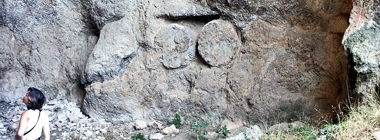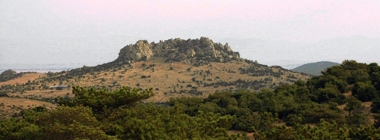
Fig. 7: An old quarry of rhyolite drums destined for olive presses.
Note the two drums that were never fully extracted.
Such quarries operated in recent centuries, until the 1950s.

Fig. 8: The castle-like feature crowning the hill seen in this photo is Vrahos, the main prehistoric quarry of cryptocrystalline rocks in the Petrota area.
It was first exploited in the Middle Palaeolithic, c. 50,000 years ago or earlier, and again in the Neolithic and the Early Bronze Age.